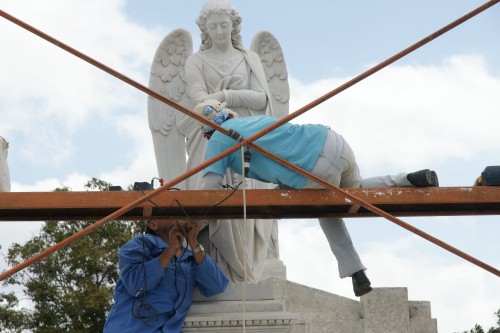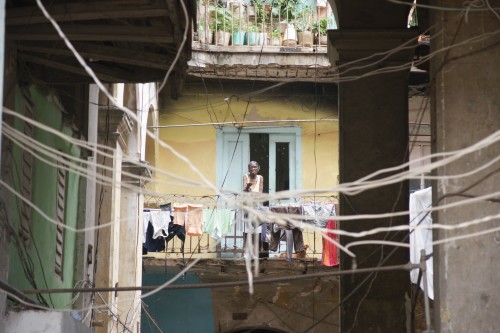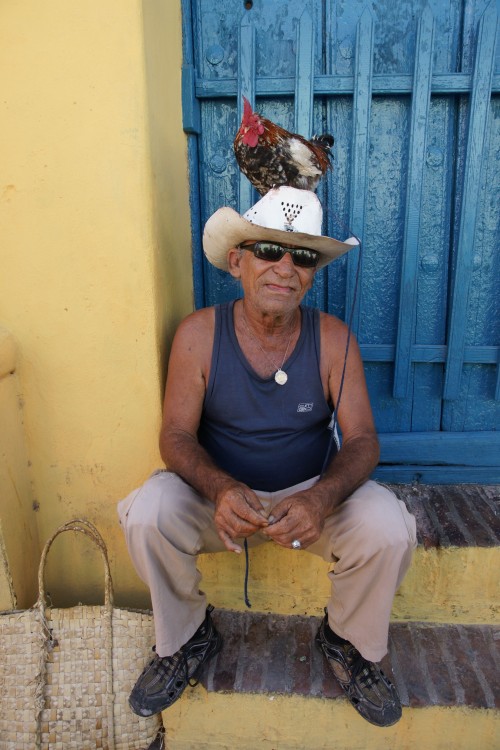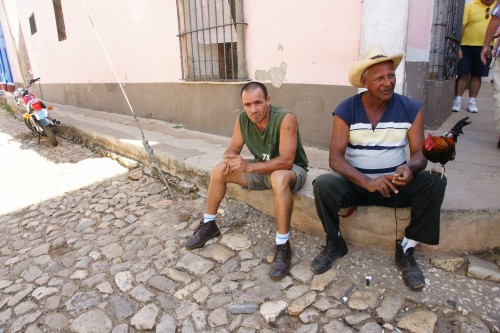Photographing Cuba
May 4, 2012 by admin
My father was a professional photojournalist, so since an early age I have been exposed to photography. I am compelled by the ability to capture fleeting moments and to frame reality to form an image of my own. When I travel, I always bring a camera and when I went to Cuba it was no different. I was particularly excited to visit this infamously photogenic island, but my travels to other countries has left me wary of certain aspects of photography.
On a solo-backpacking trip to Europe, I first encountered the alienating elements of the camera. Most basically, I noticed the caution one is forced to have towards an expensive piece of technology. Fear of theft forces the photographer to keep up a guard, and suspicion or paranoia can stain the traveling experience (all for the benefit of a commodity). Moreover, the photographer is always on one level a viewer, and there is a voyeuristic compulsion to investigate places that other tourists “did not see.” All of a sudden, places are given hierarchical value based on their cohesive aesthetic composition or illusions of “authenticity.”
Last semester, I studied abroad in Tunisia and experienced an all-together different problem with photography. Although the majority of the country is tolerant towards photo-taking, certain adherents to Islam believe cameras can capture the soul and are evil. Therefore, one has to take caution when photographing individuals so as to not offend their deeply-held religious beliefs. This awareness forces another consideration: what does it mean to photograph another human being, in the first place?
In towns such as Valadero, old men will sit on stoops with chickens on their head. They are posing for tourists, and often have a can out for money. Many tourists, however, do not drop a coin into the cans; with the almost infinite storage capacity of digital cameras, people seem to find less significance in the single image. But these men are turning their external image into a source of capital, a will-full act of objectification and commodification that complicates ethical considerations. On one hand, they are profiting of touristic voyeurism; on the other, there is a deep degree of class separation and the aestheticization of financial lack that is accentuated. Additionally, the images they create out of their own bodies are often meant to typify their economic situation, labor conditions, or “existence” in a singular shot. For the photographer, it is easy to relish lack; poverty is picturesque.
Almost every member of a group had a camera. Collectively, we took many photographs of many people. In doing so, many of us found ourselves constantly reflecting back on what that suggested. Some of us experienced people offended when we took images of them or their children. Other times, we felt dismayed by people financially dependent on being the subject of a photo. We discussed eye-contact with our models and what we imagined were tacit agreements of consent. But what plateaus of human interaction can never be reached when we consider other people in aesthetic terms? In the process of these conversations, I, at least, became deeply aware of my own position in Cuba. I was a visitor and a tourist, staying for a set period of time. While I could create my own experiences of Cuba, and I cherish the memories we all formed, ultimately I could not break the wall between me and the Cuban people that I find typified in the lens of a camera.
Leave a Reply
You must be logged in to post a comment.



